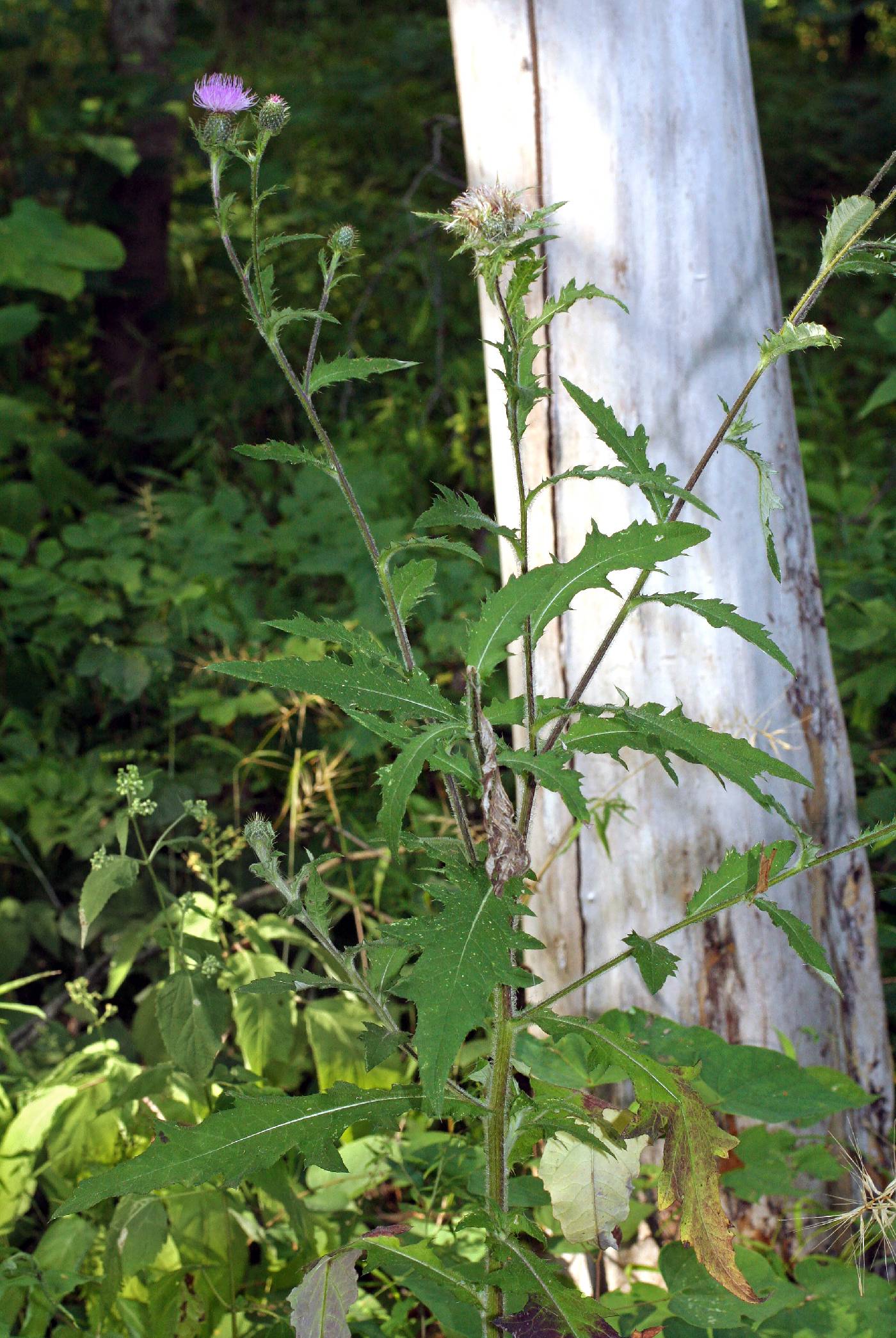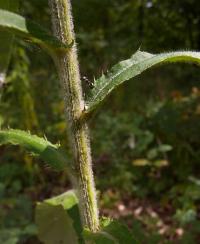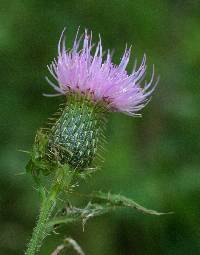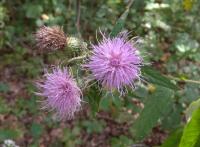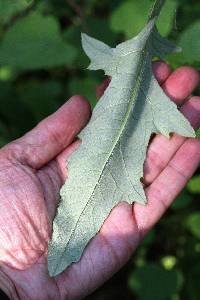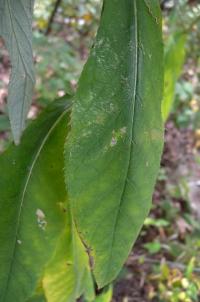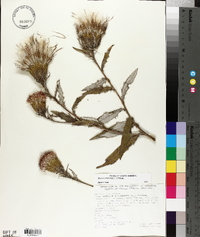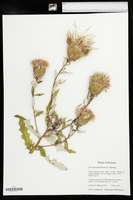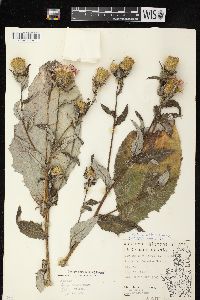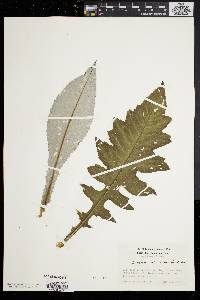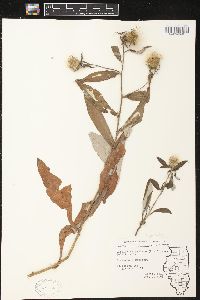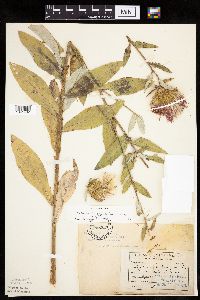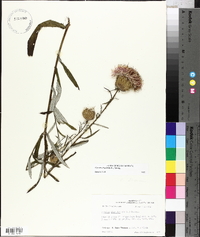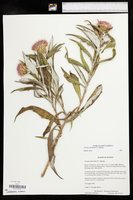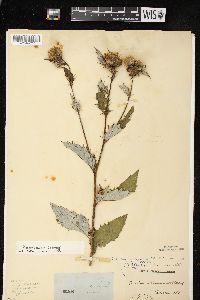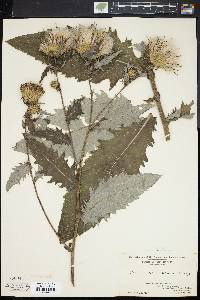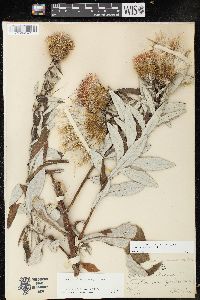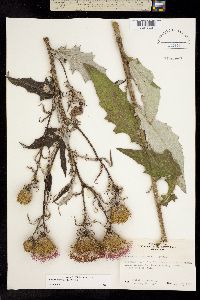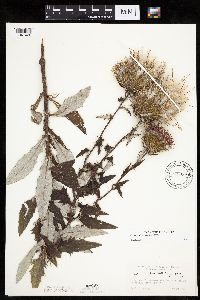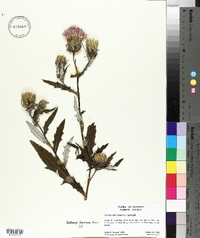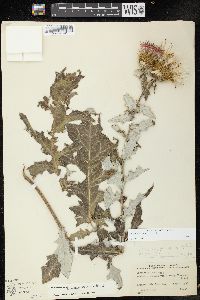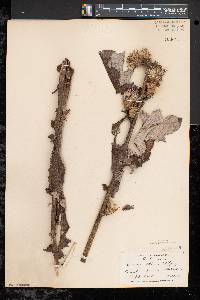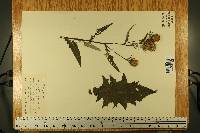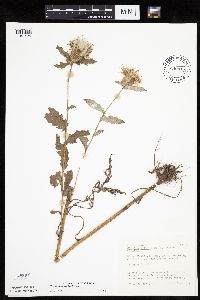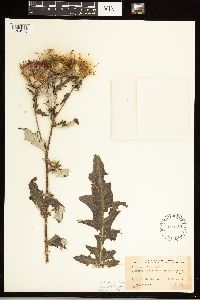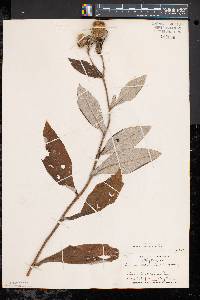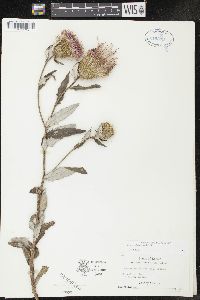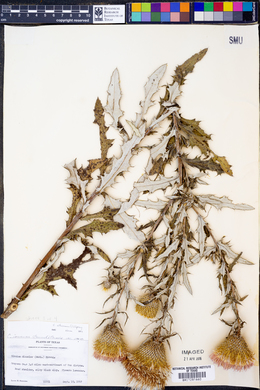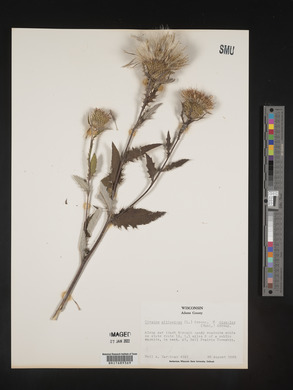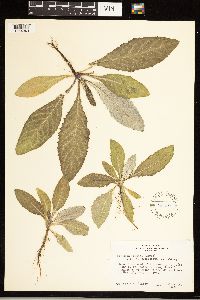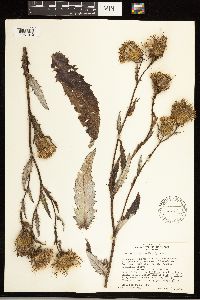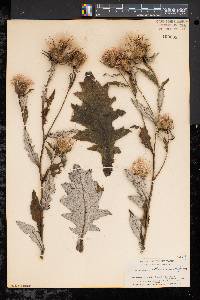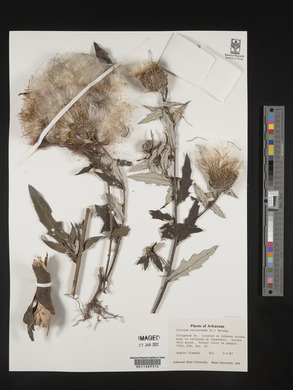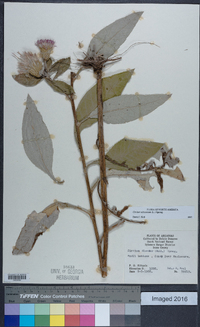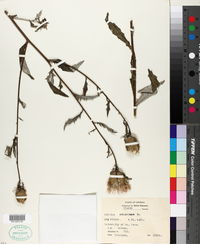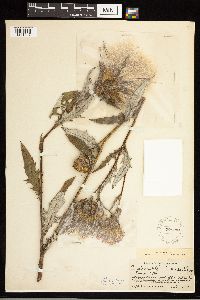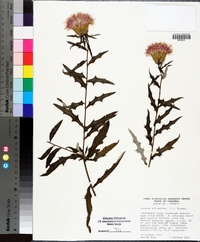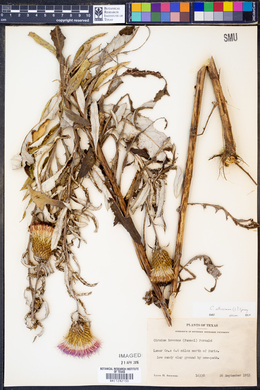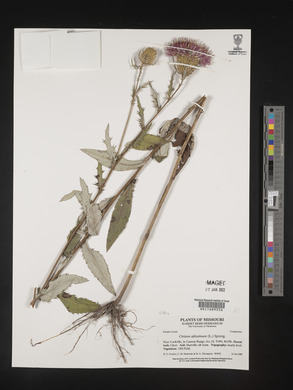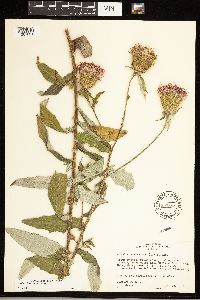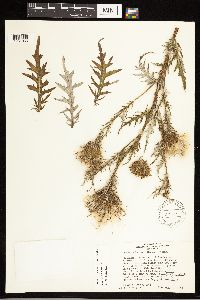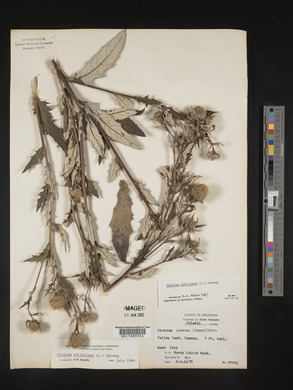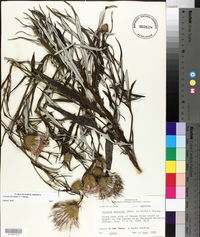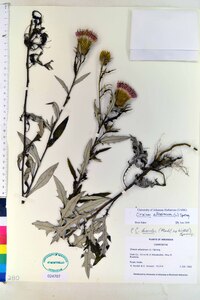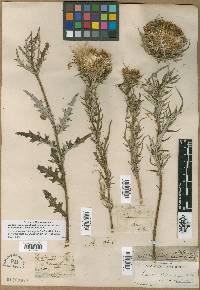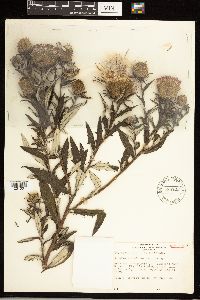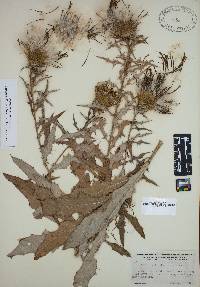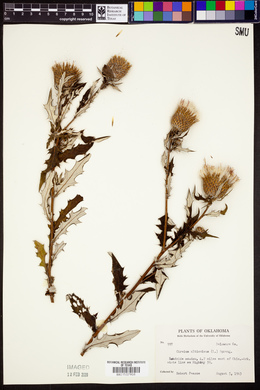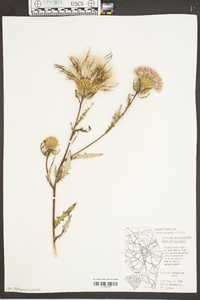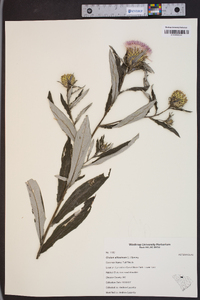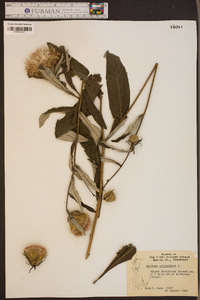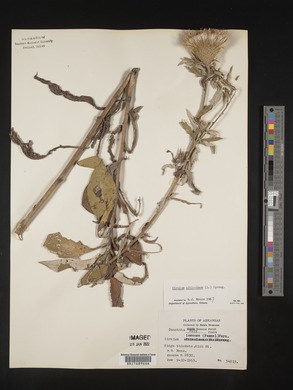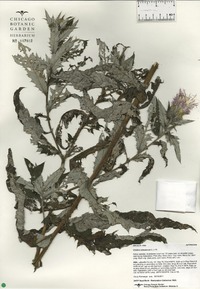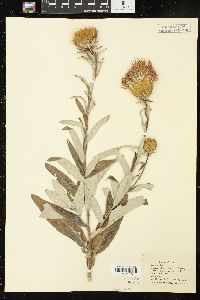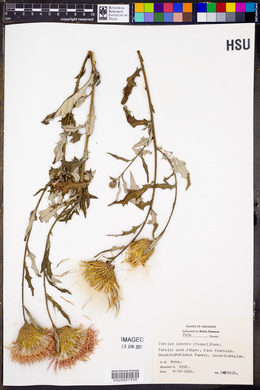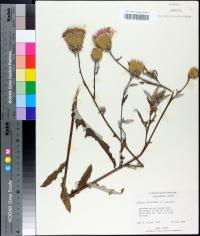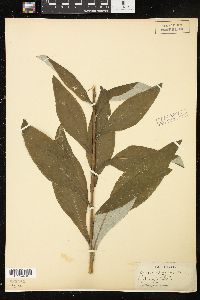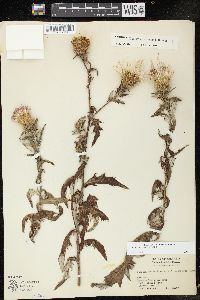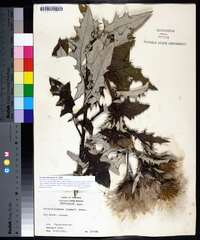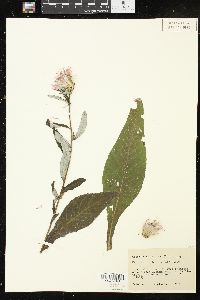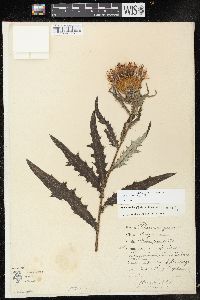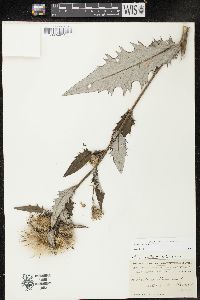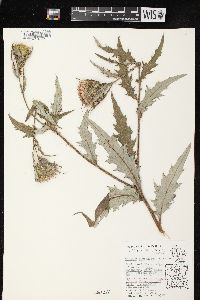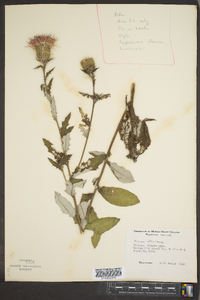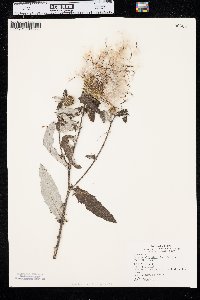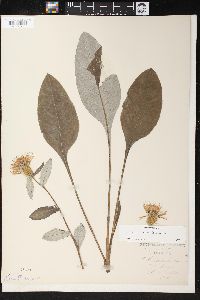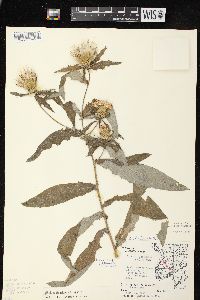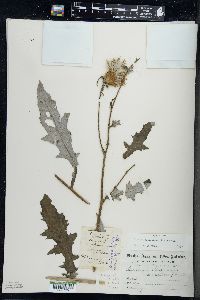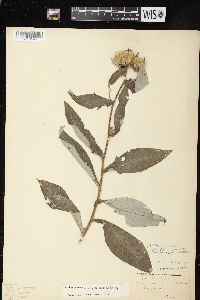
|
|
|
|
Family: Asteraceae
Tall Thistle
[Carduus altissimus Gilib., moreCirsium altissimum var. biltmoreanum Petr., Cirsium iowense , Cnicus altissimus (L.) Willd., Cnicus iowensis] |
Biennials or short-lived monocarpic perennials, (50-)100-300(-400) cm; taproots and often a cluster of coarse fibrous roots, roots without tuberlike enlargements. Stems single, erect, villous with septate trichomes, sometimes ± glabrate, sometimes distally thinly tomentose; branches few-many, ascending. Leaves: blades oblanceolate to elliptic or ovate, 10-40 × 1-13 cm, margins flat, finely spiny-toothed and otherwise undivided to coarsely toothed or shallowly pinnatifid, lobes broadly triangular, main spines 1-5 mm, abaxial faces white-tomentose, adaxial faces green, glabrate to villous with septate trichomes; basal usually absent at flowering, winged-petiolate, bases tapered; principal cauline well distributed, gradually reduced, bases narrowed, sometimes weakly clasping; distal cauline well developed. Heads 1-many, in corymbiform or paniculiform arrays, (± elevated above principal cauline leaves. , not subtended by ring of spiny bracts. Peduncles 0-5 cm (leafy-bracted. . Involucres ovoid to broadly cylindric or campanulate, (2-)2.5-3.5(-4) × (1.5-)2-3(-4) cm, thinly arachnoid. Phyllaries in 10-20 series, strongly imbricate, greenish with subapical darker central zone, ovate (outer) to lanceolate (inner), abaxial faces with a narrow glutinous ridge (milky when fresh, dark when dry), outer and middle entire, bodies appressed, spines slender, abruptly spreading, 3-4 mm; apices of inner phyllaries spreading, narrow, flattened, entire, spines spreading, slender, 3-4 mm; apices of inner phyllaries spreading, narrow, flattened, ± dilated, ± erose or finely serrulate. Corollas pink to purple (white), 20-35 mm, tubes 10-16 mm, throats 5-12 mm, lobes 5-9 mm. Style tips 4-6 mm. Cypselae tan to dark brown, 4-5.5 mm, apical collars stramineous, 0.5-1 mm; pappi 12-24 mm. 2n = 18. Flowering summer-fall (Jun-Oct). Prairies, woodlands, disturbed sites, often in damp soil; 50-700 m; Ala., Ark., Del., D.C., Fla., Ga., Ill., Ind., Iowa, Kans., Ky., La., Md., Mass., Mich., Minn., Miss., Mo., Nebr., N.Y., N.C., N.Dak., Ohio, Okla., Pa., S.C., S.Dak., Tenn., Tex., W.Va., Wis. Robust, fibrous-rooted perennial, 1-3(-4) m, openly branched when well developed; stem crisply spreading-hirsute to subglabrate, sometimes slightly tomentose in the infl; lvs large, the lower to 5 נ2 dm, broadly oblanceolate to obovate or elliptic, densely white- tomentose beneath, scabrous-hirsute to subglabrous above, merely spiny-toothed or coarsely toothed to sometimes lobed (seldom more than halfway to the midrib), the reduced ones of the infl sometimes more evidently lobed than the others; heads several or numerous on the ±leafy peduncles; invol (2-)2.5-3.5(-4) cm; middle and outer bracts tipped with a spine 2-5 mm; inner bracts merely attenuate or often with a scarious, slightly dilated and erose tip; fls mostly pink-purple; achenes 4.5-6 mm; 2n=18(20). Fields, waste places, river-bottoms, and open woods; Mass. to N.D., s. to Fla. and Tex. July-Oct. (C. iowense) Gleason, Henry A. & Cronquist, Arthur J. 1991. Manual of vascular plants of northeastern United States and adjacent Canada. lxxv + 910 pp. ©The New York Botanical Garden. All rights reserved. Used by permission. From Flora of Indiana (1940) by Charles C. Deam This species is infrequent to rare throughout the state. It is more frequent in southern Indiana and is most common on wooded slopes along streams. This is really a woodland and dry soil species, but it is also found in the open and even in springy places. |
This project was made possible in part by the Institute of Museum and Library Services [MG-70-19-0057-19].
Powered by Symbiota

